Submitted by Himani Ahuja
Blend Of Vernacular And Parametric Design - Urban Zen Defining Future In India
India Architecture News - Jul 11, 2019 - 02:21 34811 views
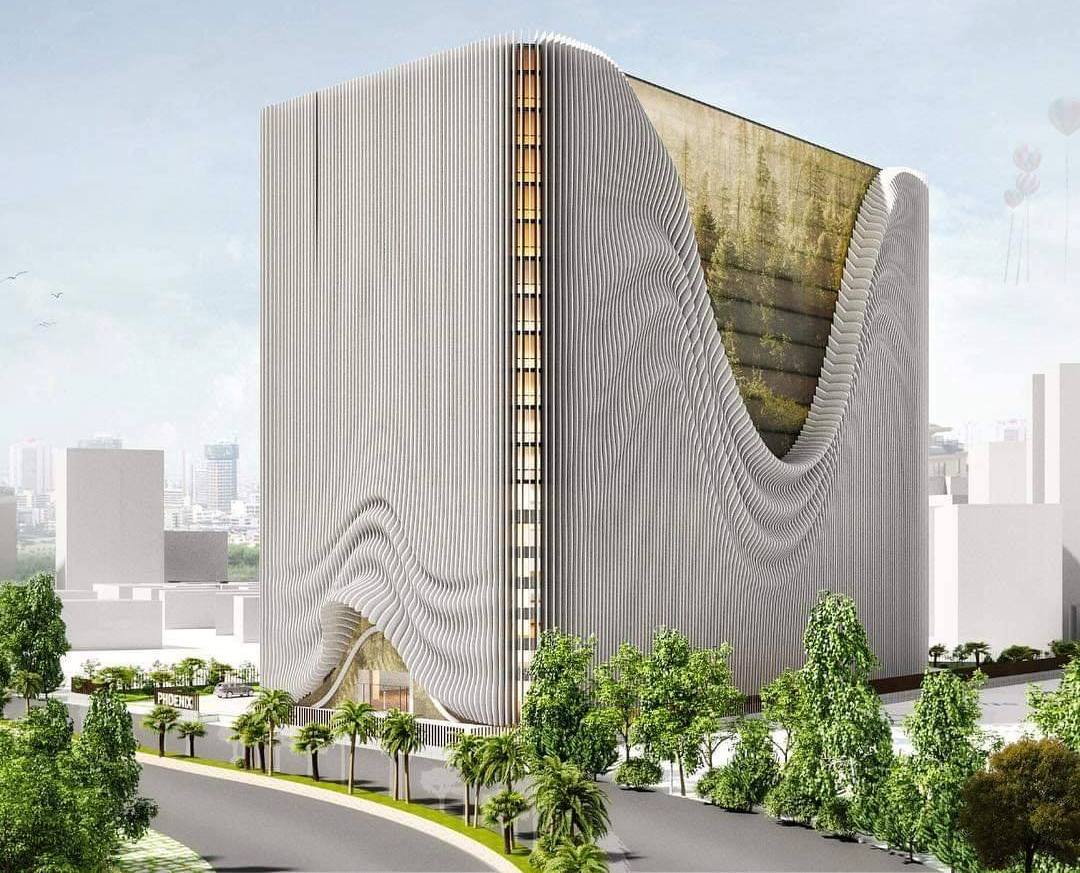
As urbanization is setting its benchmark globally, the need to come up with an ultra-modern design approach is growing for the new-age designers. Designers these days are constantly perusing the current design styles like contemporary, parametric, minimalist, etc but the need of the hour is to whisk our traditional values by incorporating substantial quantum of vernacular architecture in the tropical era to acquire a holistic design approach. As parametricism is the most recent design style discerned by the country, blending it with vernacular design style could bring to the community some interesting built forms.
“Parametricism” coined by Patrick Schumacher, Director, Zaha Hadid Architects, London is an inevitable concept for the design industry in the 21st century. Parametricism in India has been very slowly converging towards the theme of the modern paradigm. The term ‘parametric’ is derived from parametric equations which refers to the use of certain parameters that can be edited to alter the end result of an equation or a mathematical system.
Parametric design is based on algorithmic thinking. It can initiate a conventional design that may be a drawing or model. The dimensions of the design are then taken into consideration and turned into parameters i.e., they are made variable. By changing the parameters, a plethora of design options turns up, which are similar to the initial design and share the same design intent but can diverge a long way. There could be a combination of parameter values that give non-functional designs, in which either the design has to be constrained or some alterations with logic, algorithms, procedures are to be added so as to make the design functional.
Whilst providing an aesthetically pleasing geometry, parametric designs are also extremely useful for getting optimal and efficient solutions for simple challenges like maximizing floor areas, minimizing heat gains, etc. More than being exquisite, Parametric design is a way of encoding knowledge and intent into the design which makes its production more adaptable, reliable, cheaper and diverse.
Vernacular architecture can be defined as the domestic architecture of a region incorporating the local traditions, requirements and construction material. It was originated in the times when human beings used material from natural resources like shelter, in response to the climatic conditions back then. Its indigenous characteristics ensured originality and no replication was involved because of the human-crafted construction practices.
Including basic green architecture principles, vernacular built forms are in cognition with nature. Fusing local labour, technology, and material throughout, vernacular architecture emphasizes sustainability and energy efficiency. It also aims to generate a vital connection between human beings with the environment.
Vernacular buildings evolve gradually to meet environmental, socioeconomic, historical and socio-cultural attributes of the society providing to the constant need for transformation in the lifestyle of its occupiers. Vernacular heritage is alive throughout the world and still plays an active role in present-day civilization and architecture fraternity.
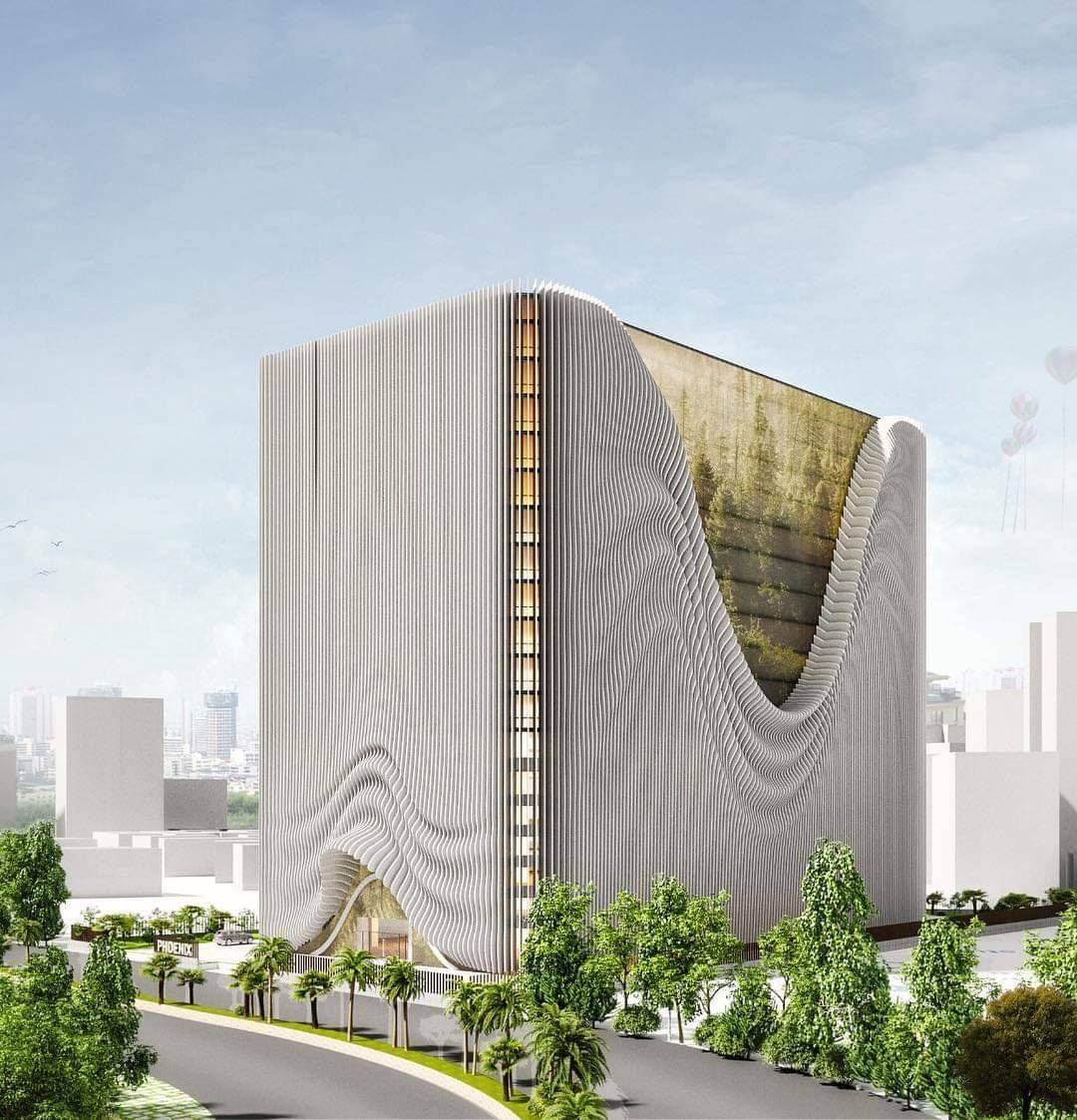
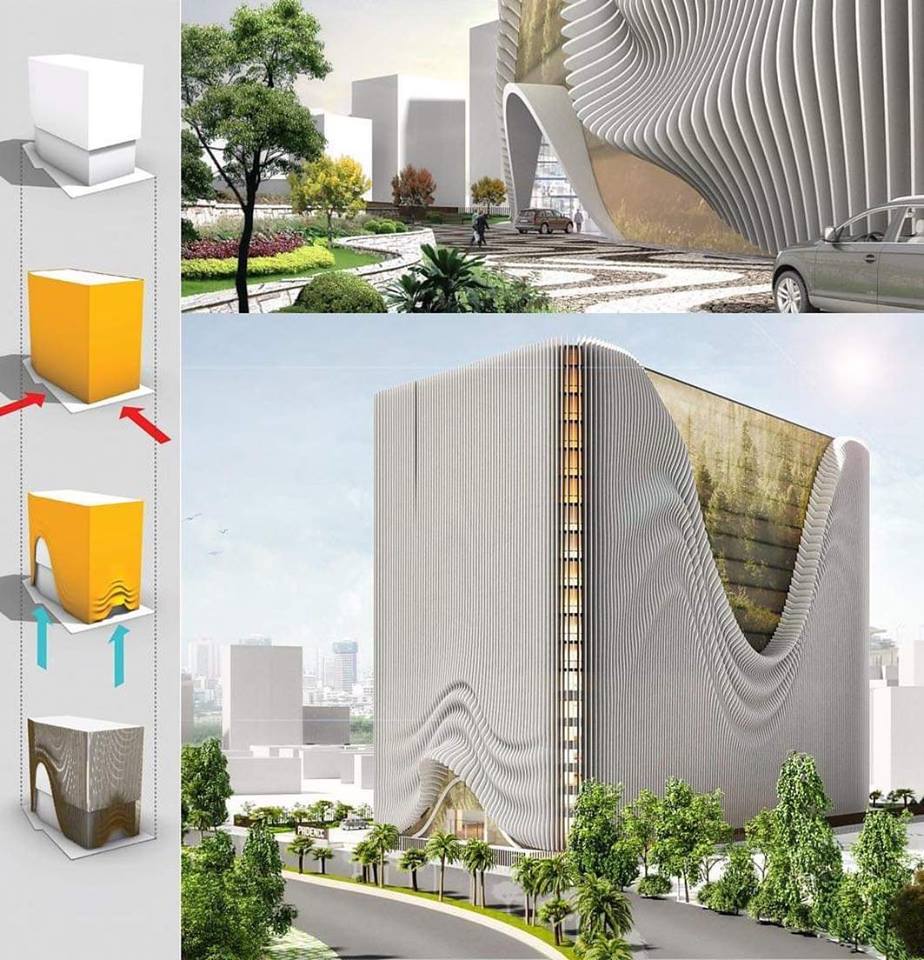
Urban Zen, a Hyderabad based design firm has always thought of architecture and buildings as more than just a built form. Using advanced design techniques, they have set-up a new advanced R&D cell located in Hyderabad in conjunction with rat[LAB], New Delhi. Showcasing Parametric & Computational Design techniques with architectural design, the firm has created a facade that wraps around the building like a drape and unfolds as spatial articulations to create a dramatic effect through vertical fins. The facade consists of essentially three layers, one the traditional curtain wall glazing, two a structured fabric made custom to reflect the park and yet retain visibility when viewed from the inside and three a finned structure specifically angled after a series of climate studies to ensure only light is brought in without the associated heat incorporating in the vernacular heritage of the place. Computational Design Techniques are deployed for conceptualization, digital fabrication and construction aspects of the project where materiality, climatic response, and contextual assessment are given prime importance.
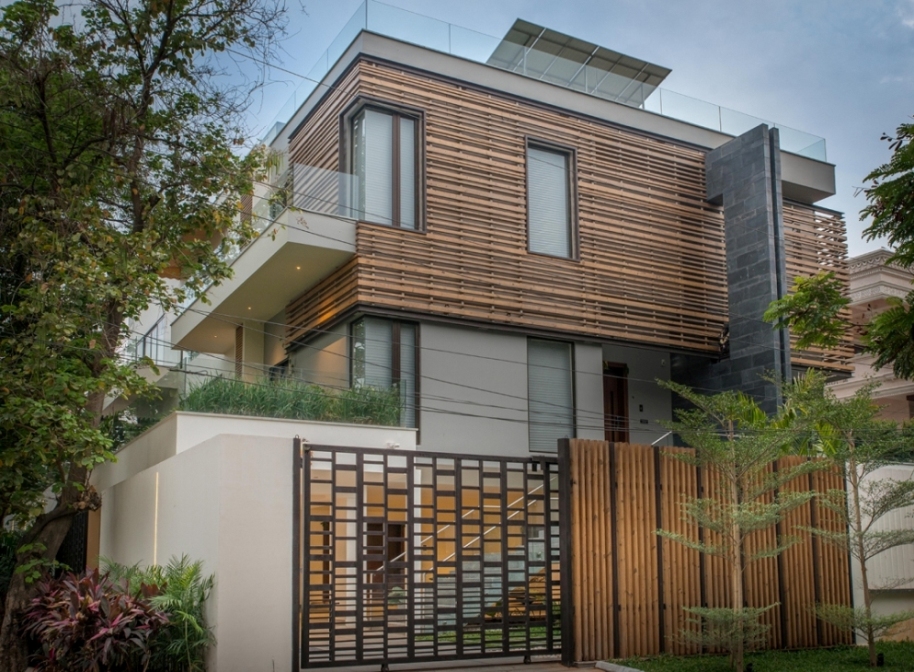
As people today tend to connect with their roots and wish to associate with their cultural and traditional heritage, they desire their houses to be designed with a vernacular aspect. ‘House of Tropics’ located in Jubilee Hills, Hyderabad by Urban Zen is a classic example of a residential design outlining vernacular architecture style. Inspired by natural tropics, it is a warm and inviting home with reminiscent of a farmhouse where interior interacts with outdoors. Enveloped with garden spaces, the house fulfils the visual and psychological needs of its users. The staircase of the house is one of the main vernacular elements designed. Its detail is inspired by the treetop perspective in a forest. Luxurious bedrooms are designed with a focus on natural material. Materials like rough-cut stone, heavy grained timber and bamboo have been used throughout the house to bring in the look and feel of the tropics. The semi-private spaces are inspired by the tropical plantain leaf.
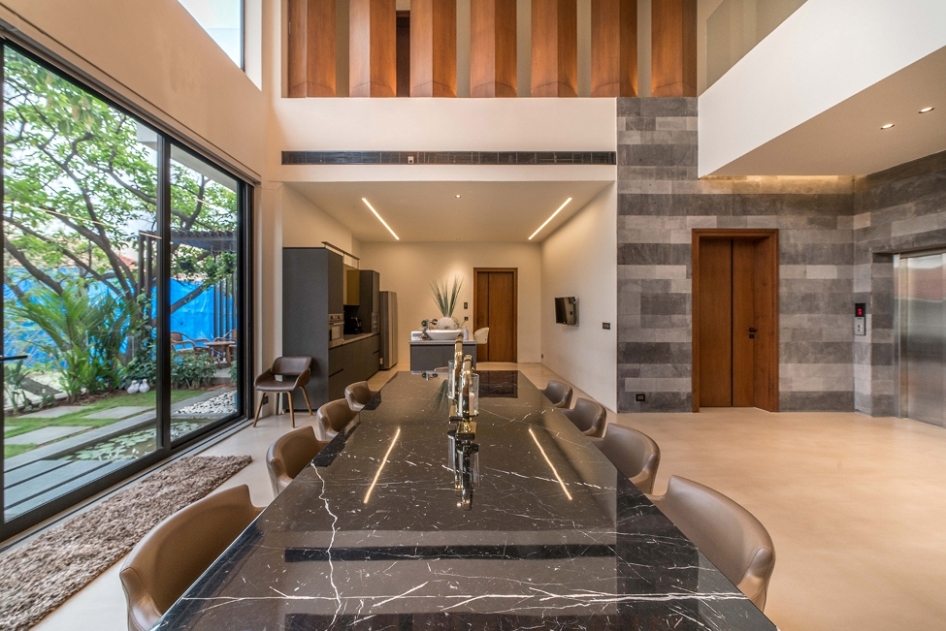
In the outdoors, the species of plants chosen for the front garden are also inspired by the interior theme. Temple trees, low height palms, ferns and water plants like lotus, and water lilies have been planted. The low height pool is edged with local grey granite stone, forming the central element of the garden. Thus, it is a design that sets this sumptuous home as a stalwart in the vernacular design style.

Hence, modern and traditional architecture styles can go hand in hand and it is prime for a designer to mould his designs such that the young generation of a particular region can connect to its heritage and culture. The apt strategy is to give the person an experience out of the revolutionary endeavours that designers contrive and India is gradually aiding to this shift.
All images courtesy of Urban Zen
> via Urban Zen
